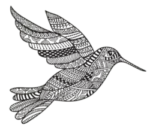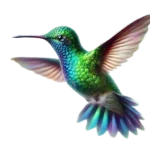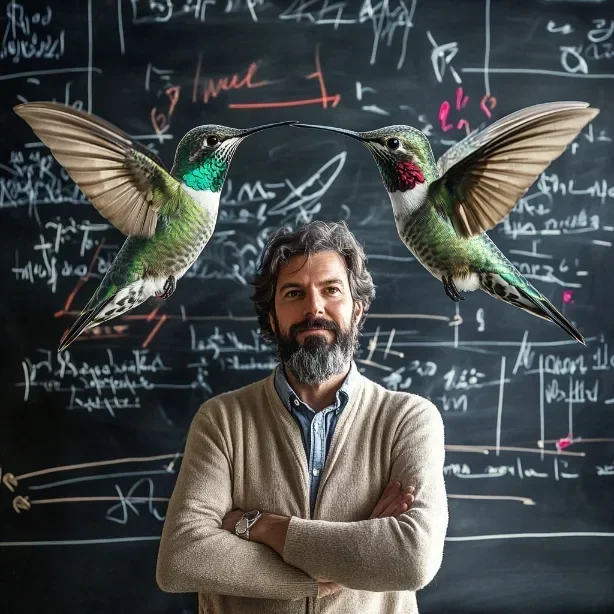(Or: How to Break the Laws of Aerodynamics While Looking Fabulous)
If Sir Isaac Newton had studied hummingbirds first, his laws of physics might have come with an asterisk: “*Except for these tiny show-offs who seem to think gravity is merely a suggestion.” These extraordinary aviators don’t just fly; they rewrite the rules of aerodynamics while making helicopters look clumsy in comparison.
Let’s start with some numbers that make aerospace engineers question their career choices:
- Wing beats: Up to 80 times per second
- Flight speed: Up to 35 mph in forward flight
- Aerial maneuverability: 360-degree rotation in place
- Hover precision: Maintained within millimeters
The Helicopter That Nature Built
Conventional wisdom says birds fly by pushing air downward with their wings. Hummingbirds apparently heard this and said, “Hold my nectar.” Instead of the typical up-down wing motion, these aerial acrobats move their wings in a horizontal figure-eight pattern, creating lift on both the forward and backward strokes. It’s as if they studied helicopter design and decided to improve upon it using nothing but feathers and attitude.
Breaking Physics: The Art of Hovering
The real magic happens during hovering, where hummingbirds achieve what aeronautical engineers spend billions trying to perfect. Their wings move in a pattern that generates:
- Leading-edge vortices on both forward and backward strokes
- Constant lift throughout the entire wing cycle
- Near-perfect stability in mid-air
- Energy efficiency that makes modern drones look wasteful
The Power Behind the Glory
Imagine trying to pat your head, rub your belly, and solve a Rubik’s cube simultaneously. Now do it 80 times per second. That’s roughly what a hummingbird’s flight muscles achieve during normal operation. Their chest muscles operate with a precision and power that would make a Formula 1 engine blush.
The physics behind the power involves:
- Specialized muscle fiber composition
- Unique wing joint architecture
- Advanced neural control systems
- Energy delivery systems that operate at the edge of biological possibility
The Air Dance: Advanced Aerodynamics
When it comes to manipulating air flow, hummingbirds are nature’s master artists. Their wings create complex patterns of air movement that scientists are still trying to fully understand. Each wing beat generates multiple vortices, turning the surrounding air into a microscopic tornado factory that somehow results in perfectly controlled flight.
Defying Gravity: The Backward Flight Club
As if normal flight weren’t impressive enough, hummingbirds casually reverse direction mid-air, flying backward with the same precision as forward flight. The physics involved in this maneuver are so complex that it took decades of high-speed photography and computer modeling just to begin understanding it.
During backward flight, these tiny aviators must:
- Reverse their wing stroke pattern
- Maintain lift while moving in reverse
- Keep their body orientation stable
- Look smug about doing something impossible
The Weather Report: Flying in Turbulence
Perhaps most impressively, hummingbirds maintain stable flight in conditions that would ground most aircraft. Rain, wind, and even moderate storms don’t stop these determined flyers. Their ability to process and respond to air turbulence happens faster than our most advanced computers can calculate.
Conclusion: Nature’s Flying Laboratory
The physics of hummingbird flight represents one of nature’s most sophisticated achievements in aerodynamics. These birds don’t just fly; they perform aerial ballet with a level of precision that makes modern aviation technology look primitive by comparison.
Remember: The next time you see a hummingbird hovering at a flower, you’re witnessing an accomplishment that took millions of years of evolution to perfect and would require several advanced physics degrees just to explain. And they do it all while looking fabulous.
Post Script: Some physicists still suspect hummingbirds might be accessing an unknown dimension to achieve their aerial feats. The birds aren’t commenting, but their smug expressions tell us everything we need to know.


